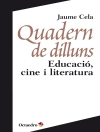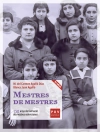A significant driver of recent growth in the use of mathematics in the professions has been the support brought by new technologies. Not only has this facilitated the application of established methods of mathematical and statistical analysis but it has stimulated the development of innovative approaches. These changes have produced a marked evolution in the professional practice of mathematics, an evolution which has not yet provoked a corresponding adaptation in mathematical education, particularly at school level. In particular, although calculators — first arithmetic and scientific, then graphic, now symbolic — have been found well suited in many respects to the working conditions of pupils and teachers, and have even achieved a degree of official recognition, the integration of new technologies into the mathematical practice of schools remains marginal. It is this situation which has motivated the research and development work to be reported in this volume. The appearance of ever more powerful and portable computational tools has certainly given rise to continuing research and development activity at all levels of mathematical education. Amongst pioneers, such innovation has often been seen as an opportunity to renew the teaching and learning of mathematics. Equally, however, the institutionalization of computational tools within educational practice has proceeded at a strikingly slow pace over many years.
Table of Content
Calculators in Mathematics Education: A Rapid Evolution of Tools, with Differential Effects.- A Cas as an Assistant to Reasoned Instrumentation.- Transposing Computer Tools from the Mathematical Sciences into Teaching.- The Influence of a Computer Algebra Environment on Teachers’ Practice.- Using Symbolic Calculators to Study Mathematics.- An Instrumental Approach to Mathematics Learning in Symbolic Calculator Environments.- Computer Algebra as an Instrument: Examples of Algebraic Schemes.- Instrumental Genesis, Individual and Social Aspects.- The Integration of Symbolic Calculators into Secondary Education: Some Lessons from Didactical Engineering.- Conclusion.












